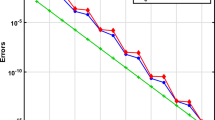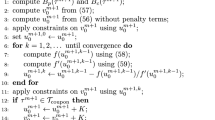Abstract
The intensity, hardness, and extent of catastrophic accidents in recent decades have led insurance companies to seek resources to raise the capital to deal with the caused damage by these accidents. One of the most effective tools to cover the risk of catastrophic events such as earthquakes, floods, etc., which is widely used in the world, is catastrophic bonds. The purpose of this study is to provide a model for the pricing of catastrophic bonds. Because earthquake catastrophic damage causes major changes to corporate assets as well as investment trends, a jump sentence is added to the study model to indicate the severity and probability of damage. To produce the time discretization, the suggested methodology employs a one-order correct expression in the first process. To generate the full-discretization in the second level, the spectral collocation method approach that relies on the Chebyshev basis of the second kind is presented. Adding the jump sentence causes the original model to become an integral differential model, which approximates using the spectral method. Also, based on the derivatives in the obtained model, we approximated the derivative operator by using this type of base. The numerical investigation confirms the temporal discretized formulation’s stability and convergence. We also approximated the integral sentence using the expansion of Gauss-Laguerre quadrature and presented numerical results.

Similar content being viewed by others
References
Björk, T. (2009). Arbitrage theory in continuous time. Oxford University Press.
Burnecki, K., & Kukla, G. (2003). Pricing of zero-coupon and coupon CAT bonds. Applicationes Mathematicae, 30, 315–324.
Costa, B. (2004). Spectral methods for partial differential equations. CUBO, A Mathematical Journal, 6(4), 1–32.
Cox, SH., & Schwebach, RG. (1992) Insurance futures and hedging insurance price risk. Journal of Risk and Insurance, 628–644.
Cox, S. H., Fairchild, J. R., & Pedersen, H. W. (2000). Economic aspects of securitization of risk. ASTIN Bulletin: The Journal of the IAA, 30(1), 157–193.
Cox, S. H., & Pedersen, H. W. (2000). Catastrophe risk bonds. North American Actuarial Journal, 4(4), 56–82.
Cummins, J. D., & Geman, H. (1995). Pricing catastrophe insurance futures and call spreads: An arbitrage approach. The Journal of Fixed Income, 4(4), 46–57.
Doha, E. H., Bhrawy, A. H., & Ezz-Eldien, S. (2011). Efficient Chebyshev spectral methods for solving multi-term fractional orders differential equations. Applied Mathematical Modelling, 35(12), 5662–5672.
Geman, H., & Yor, M. (1997). Stochastic time changes in catastrophe option pricing. Insurance Mathematics: and Economics, 21(3), 185–193.
Härdle, W. K., & Cabrera, B. L. (2010). Calibrating CAT bonds for Mexican earthquakes. Journal of Risk and Insurance, 77(3), 625–650.
Kadalbajoo, M. K., Kumar, A., & Tripathi, L. P. (2016). A radial basis function based implicit-explicit method for option pricing under jump-diffusion models. Applied Numerical Mathematics, 110, 159–173.
Karimnejad Esfahani, M., Neisy, A., & De Marchi, S. (2021). An RBF approach for oil futures pricing under the jump-diffusion model. Journal of Mathematical Modeling, 9(1), 81–92.
Khader, M., Gómez-Aguilar, J., & Adel, M. (2021). Numerical study for the fractional RL, RC, and RLC electrical circuits using Legendre pseudo-spectral method. International Journal of Circuit Theory and Applications, 49(10), 3266–3285.
Laster, D., & Raturi, M. (2001). Capital market innovation in the insurance industry, Sigma, 3.
Loubergé, H., Kellezi, E., & Gilli, M. (1999) Using catastrophe-linked securities to diversify insurance risk: A financial analysis of CAT bonds. Journal of Insurance Issues, 125–146.
Mesgarani, H., Beiranvand, A., & Aghdam, Y. E. (2021). The impact of the Chebyshev collocation method on solutions of the time-fractional Black-Scholes. Mathematical Sciences, 15(2), 137–143.
Saad, K. M., Khader, M. G., ómez-Aguilar, J., & Baleanu, D. (2019). Numerical solutions of the fractional Fisher’s type equations with Atangana-Baleanu fractional derivative by using spectral collocation methods. Chaos An Interdisciplinary Journal of Nonlinear Science, 29(2), 023116.
Safaei, M., Neisy, A., & Nematollahi, N. (2018). New splitting scheme for pricing American options under the Heston model. Computational Economics, 52(2), 405–420.
Shahrokhabadi, MA., Neisy, A., Perracchione, E., Polato, M. (2019) Learning with subsampled kernel-based methods: Environmental and financial applications. Dolomites Research Notes on Approximation, 12(1).
Sondermann, D. (1991). Reinsurance in arbitrage-free markets. Insurance: Mathematics and Economics, 10(3), 191–202.
Unger, A. J. (2010). Pricing index-based catastrophe bonds: Part 1: Formulation and discretization issues using a numerical PDE approach. Computers & Geosciences, 36(2), 139–149.
Xiong, P. Y., Jahanshahi, H., Alcaraz, R., Chu, Y. M., Gómez-Aguilar, J., & Alsaadi, F. E. (2021). Spectral entropy analysis and synchronization of a multi-stable fractional-order chaotic system using a novel neural network-based chattering-free sliding mode technique. Chaos, Solitons & Fractals, 144, 110576.
Xu, X., Aghdam, YE., Farnam, B., Jafari, H., Masetshaba, MT., Unlu, C. (2022) Pricing European two asset option using the spectral method with second kind Chebyshev polynomials. Fractals.
Funding
The authors have not disclosed any funding.
Author information
Authors and Affiliations
Contributions
YEA: Conceptualization, Methodology, Formal analysis, Software. AN: Visualization, Investigation, Formal analysis, Software. Review & editing. AA: Visualization, Data curation, Software, Writing - original draft.
Corresponding author
Ethics declarations
Conflict of interest
The authors declared no potential conflicts of interest with respect to the research, authorship, and/or publication of this article.
Ethical Approval
This manuscript does not contain any studies with human participants or animals performed by any of the authors.
Informed Consent
Informed consent was obtained from all individual participants included in the study.
Additional information
Publisher's Note
Springer Nature remains neutral with regard to jurisdictional claims in published maps and institutional affiliations.
Rights and permissions
Springer Nature or its licensor (e.g. a society or other partner) holds exclusive rights to this article under a publishing agreement with the author(s) or other rightsholder(s); author self-archiving of the accepted manuscript version of this article is solely governed by the terms of such publishing agreement and applicable law.
About this article
Cite this article
Aghdam, Y.E., Neisy, A. & Adl, A. Simulating and Pricing CAT Bonds Using the Spectral Method Based on Chebyshev Basis. Comput Econ 63, 423–435 (2024). https://doi.org/10.1007/s10614-022-10347-2
Accepted:
Published:
Issue Date:
DOI: https://doi.org/10.1007/s10614-022-10347-2




